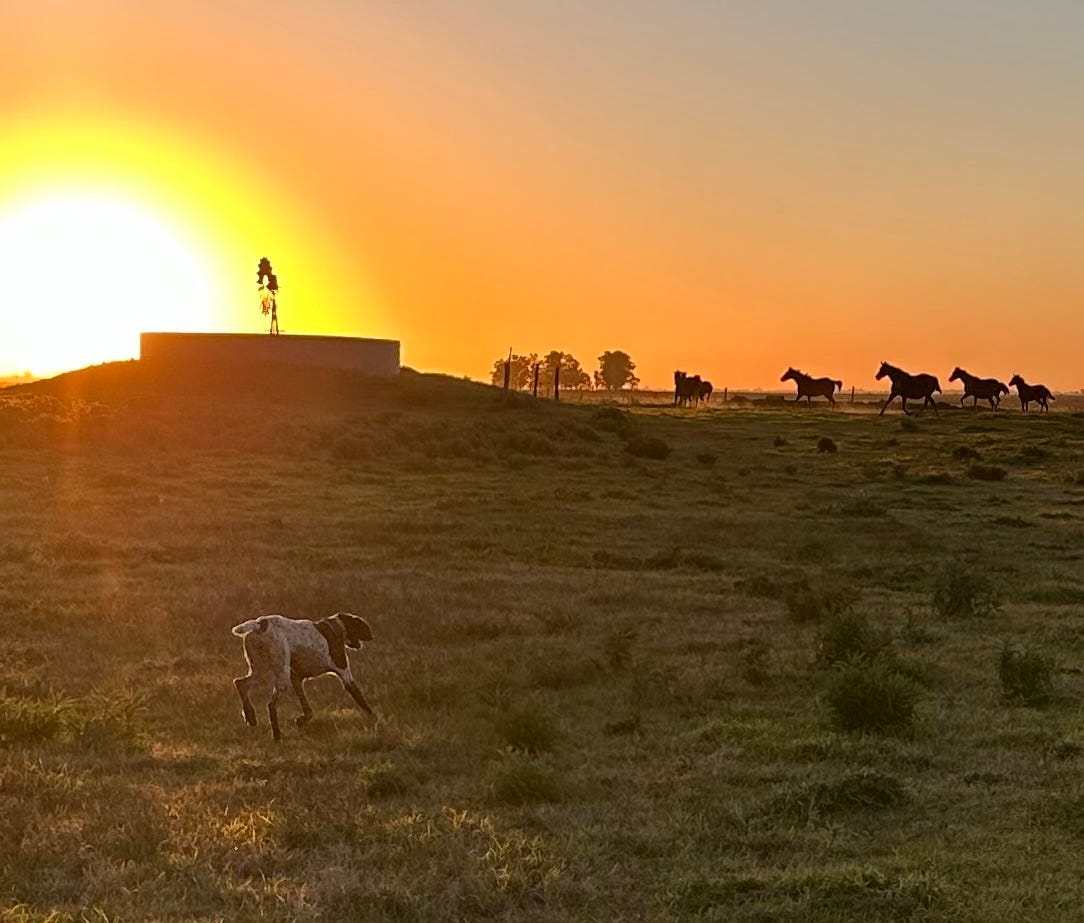Sublime
We take a break from energy, environmental, and economic policy to immerse ourselves in "the environment."
Words simply cannot do justice to describe our annual fly fishing adventure out west. This year it was with friends who also happen to be environmental professionals.
So here’s a 2:00 minute movie set to music that will at least give you a taste.
If you really want to understand “the environment,” you have to spend lots of time studying it. But that alone is not enough.
You must truly immerse yourself in it. Go out, carefully observe, figure out how to fit into it, and get it under your fingernails. Over and over again.
Suffer heat, or a bitter wet cold, maybe even a fear of apex predators once in a while. Feel it squirm in your hands before you release it back into a stream. Stare in awe as a dog becomes a statue, nose full of the scent of a wild game bird, in one of nature’s most amazing choreographed dances.
As founder/head writer of environMENTAL, that is what I will attempt to evoke in a new Substack coming later this year. Stay tuned for more.




Absolutely true. I have long held the opinion that most "environmentalists" are either of the type that follow around places to visit on their Instagram account (meaning they only see overvisited places that others congregate at) or they never escape their SUV and living room and see the environment in pictures on their phones (not realizing that most of the world has no cell coverage). Most "environmentalists" only pretend not to be wholly dependent on their outdoor products made from petroleum that are the only reason they are even able to visit the overused places they consider wild.
Some of the most impactful experiences I have had as a field geologist were doing months of field work in the Grand Canyon on the Hualapai Reservation (you can't see the real Grand Canyon in the National Park as they won't let you). I got to know the daily habits of several individual rattlesnakes of various species, was visited up close by desert bighorns, wild donkeys, coyote puppies, followed around by hummingbirds, and got to know the local Hualapai quite well. I worked one summer in Albania, got served freshly killed rabbit for dinner by my hosts, and saw how life was lived in the 19th century without public water supplies and electricity. Then I got to experience Ethiopia, where life has not changed much in the past 2,000 years and camped for months on the banks of the Awash River. I had to be cautious about the hippopatamuses, the thousands of crocodiles, carpet vipers, hyenas, African lions, and got to know the locals who herded goats and camels, lived off their herds and migrated anywhere they chose. All this was while looking at fossil evidence of many past species, including our human ancestors. We killed and butchered a goat almost every week for ourselves. No one in the first world understands either how MOST of the world lives, or the wild environment, yet it is constantly used by them as some divine standard. People are part of nature but they forget that and instead adopt what is essentially a Biblical viewpoint (which they also deny) that they are in charge of the world and must save it. Most have delusions of grandeur and suffer cognitive dissonance.
Most folks don't understand that there is life everywhere. Death Valley, full of life. Chernobyl exclusion zone, life thrives. Glad you have your chance to stick your toes in the mud, the best therapy